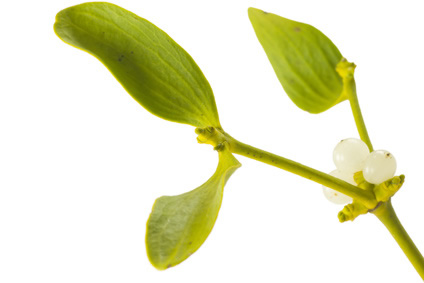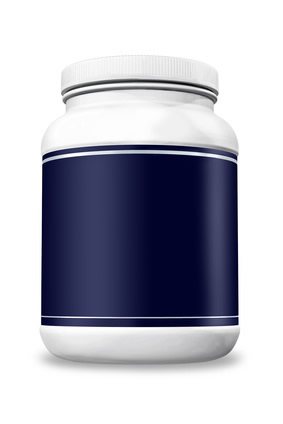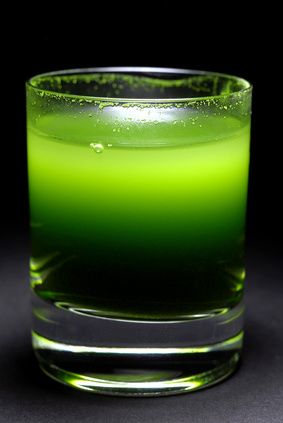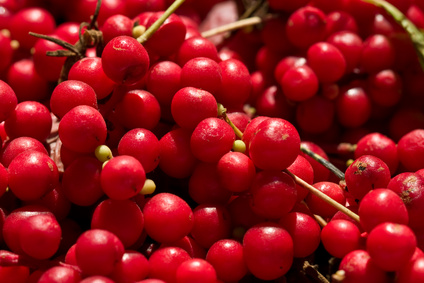Mistletoe is a parasitic plant that grows on oak or elm trees. Iscador is Weleda’s proprietary cancer treatment formulation derived directly from the mistletoe plant. In 1920, Rudolf Steiner, started promoting iscador as a cancer treatment. Weleda co-founder Dr. Rudolf Steiner first suggested it specifically for cancer patients in the early 20th century, and with increasing successes in treatment since that time, its use has become widespread (Other brands of mistletoe; Isorel, Eurixor and Helixor). For more than 80 years, an aqueous extract of Viscum album, named Iscador, has been used as an anticancer drug. Iscador is licensed for mono and adjuvant anti-cancer therapy in Switzerland, the European Union, and several countries around the world.
Iscador Mistletoe Extract
Iscador is ‘made from fermented extracts of European mistletoe, some forms of which are combined with small amounts of metals to produce certain desired, anticancer effects’. In Germany, a variety of Iscador preparations are available: M (mali = apple tree), P (pini = pine), U (ulmi = elm) and Qu (quercus = oak) ; in Switzerland, a (abietis = spruce) is also available.
Iscador Effectiveness
Iscador have been recommended for use in helping treat cancers of the breast, cervix, stomach, colon and lung, as well as lymphoma and leukemia and sarcoma. Iscador is thought to work against cancer by shrinking tumors and attacking malignant cells. According to studies; have found that iscador may increase the amount of white blood cells, as well as increase their activity, strengthening the immune system. Proponents says mistletoe extract injected directly into or near a tumor can slow and possibly reverse the growth of cancer cells, even in advanced cases of cancer.
Opinions
 According to Weleda, 50 % of Germans with cancer are given mistletoe as treatment. In a research conducted by the “Institute for Preventive Medicine in Heidelberg“, people taking Iscador have a better chance of cancer survival than those who do not take it by up to 40 %. German Commission E, has approved mistletoe as a therapy to treat symptoms of malignant tumors. Research in 2009 by the “German Institute of Immunology and Experimental Oncology” has shown that misletoe extract injected into the body can improve cancer survival times. Adjuvant treatment with iscador can increase the tolerability of conventional cancer treatment, improve patient quality of life, and lengthen tumor free survival, Dr. Paul Bock said.
According to Weleda, 50 % of Germans with cancer are given mistletoe as treatment. In a research conducted by the “Institute for Preventive Medicine in Heidelberg“, people taking Iscador have a better chance of cancer survival than those who do not take it by up to 40 %. German Commission E, has approved mistletoe as a therapy to treat symptoms of malignant tumors. Research in 2009 by the “German Institute of Immunology and Experimental Oncology” has shown that misletoe extract injected into the body can improve cancer survival times. Adjuvant treatment with iscador can increase the tolerability of conventional cancer treatment, improve patient quality of life, and lengthen tumor free survival, Dr. Paul Bock said.
Mechanism of Action of Mistletoe
Mistletoe contains a cytotoxic lectin, viscumin. It also contains a number of cytotoxic proteins and polypetides. Polypeptides, including lectins and viscotoxins, are thought responsible for immune stimulant and tumor inhibition activities. For this reason, mistletoe has been classified as a type of biological response modifier. Also, extracts of mistletoe have been shown in the laboratory to prevent the growth of new blood vessels needed for tumors to grow.
What Does Iscador?
• Immunomodulatory effect
• Inhibition of malignant growth
• Reducing the risk of recurrences and metastase
• Reducing adverse effects from chemotherapy and radiation therapy (Protect the DNA in white blood cells in the lab, including cells that have been exposed to DNA-damaging chemotherapy drugs)
• Improvement in quality of life
• Prolongation of life
• An injectable form of mistletoe lectins was found to reduce the frequency and intensity of clinical signs and symptoms in people with hepatitis C.
How to Apply Treatment?
Iscador is given by subcutaneous injection near or directly into the tumor. It sometimes is injected directly into the tumor particularly on the liver, esophagus and cervix. Also be taken orally in tumors of the brain and spinal cord. As daily therapy progresses, more concentrated iscador extractions are administered. Iscador injections promoted to prevent cancer may involve three to seven injections a week over several months to several years.
Iscador Side Effects
Side effects can include redness at the injection site, headaches, fever and chills. In rare cases allergic symptoms including anaphylactic reactions have been reported. According to some research; mistletoe injections should not be administered during the first days of the menstrual period. Seizure and death have been reported. A few cases of severe allergic reactions, including anaphylactic shock, have been reported.
 Red clover contains genistein, a compound that prohibits the growth of blood vessels into tumors, preventing the growth of the tumor as well. Red clover contains a form of vitamin E known as tocopherol, which is a powerful anticarcinogenic compound. Tocopherol helps to prevent the growth of cancerous tumors and lowers the risk of developing, particularly breast cancer. Some doctors believe that isoflavones increase the risk for a return of estrogen-dependent cancers, while others site evidence that suggests the isoflavones bind to the receptors that cancer cells require to divide and actually prevent or delay the return of cancer.
Red clover contains genistein, a compound that prohibits the growth of blood vessels into tumors, preventing the growth of the tumor as well. Red clover contains a form of vitamin E known as tocopherol, which is a powerful anticarcinogenic compound. Tocopherol helps to prevent the growth of cancerous tumors and lowers the risk of developing, particularly breast cancer. Some doctors believe that isoflavones increase the risk for a return of estrogen-dependent cancers, while others site evidence that suggests the isoflavones bind to the receptors that cancer cells require to divide and actually prevent or delay the return of cancer. Boswellia serrata appears to reduce the inflammation associated with Crohn’s disease and ulcerative colitis, painful intestinal disorders. Randomized, placebo controlled, double-blind experiment, patients with Crohn’s disease were treated with 2 oral capsules of 400 mg Boswellia serrata or placebo three times daily for 12 months. At the end of the study, found that 59% of the Boswellia-treated and 55% of the placebo-treated patients maintained remission from Crohn’s disease, indicating no statistically significant difference in efficacy between the active and control groups.
Boswellia serrata appears to reduce the inflammation associated with Crohn’s disease and ulcerative colitis, painful intestinal disorders. Randomized, placebo controlled, double-blind experiment, patients with Crohn’s disease were treated with 2 oral capsules of 400 mg Boswellia serrata or placebo three times daily for 12 months. At the end of the study, found that 59% of the Boswellia-treated and 55% of the placebo-treated patients maintained remission from Crohn’s disease, indicating no statistically significant difference in efficacy between the active and control groups. Studies of wheatgrasss juice indicate it may help reduce symptoms of distal ulcerative colitis, reduce the need for transfusions in patients with thalassemia major and may decrease myelotoxicity in breast cancer patients undergoing chemotherapy. A small clinical trial involving twenty-one patients with distal ulcerative colitis showed that wheatgrass can reduce the symptoms associated with the disease. The Scandavian Journal of Gastroenterology in 2002 published a study showing that wheatgrass can help alleviate symptoms of ulcerative colitis. One study was done on children with
Studies of wheatgrasss juice indicate it may help reduce symptoms of distal ulcerative colitis, reduce the need for transfusions in patients with thalassemia major and may decrease myelotoxicity in breast cancer patients undergoing chemotherapy. A small clinical trial involving twenty-one patients with distal ulcerative colitis showed that wheatgrass can reduce the symptoms associated with the disease. The Scandavian Journal of Gastroenterology in 2002 published a study showing that wheatgrass can help alleviate symptoms of ulcerative colitis. One study was done on children with  Schizandra has been shown to strengthen and protect the liver. Laboratory studies have demonstrated its ability to make the enzyme,
Schizandra has been shown to strengthen and protect the liver. Laboratory studies have demonstrated its ability to make the enzyme,